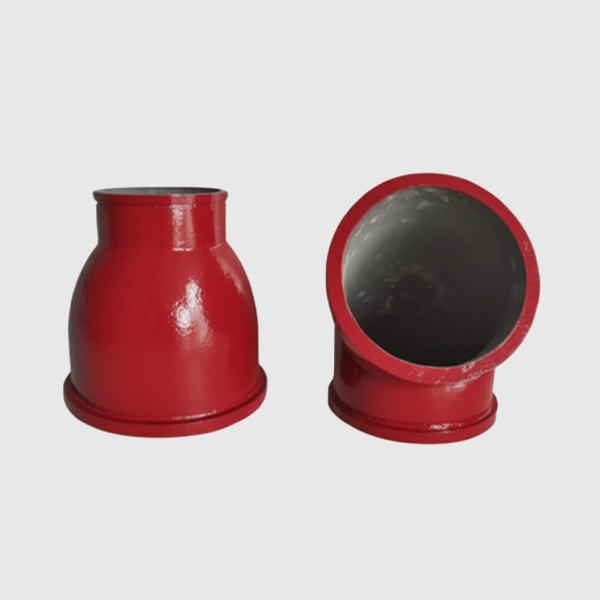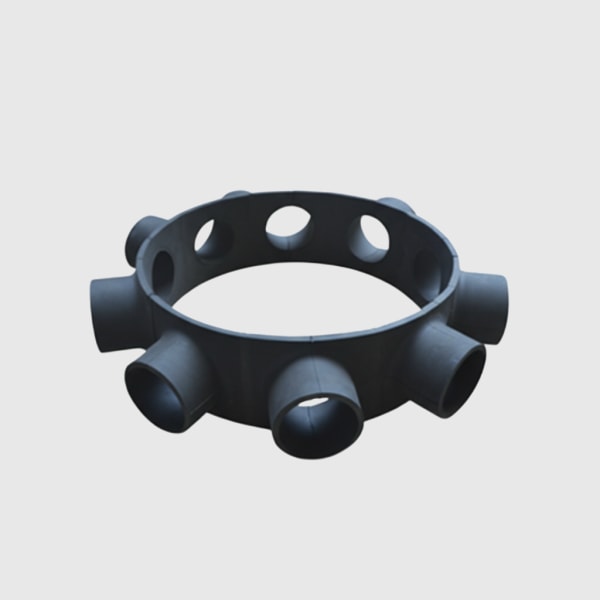Product Overview and 2025 Market Relevance
Three-phase silicon carbide (SiC) rectifier units bring high-efficiency, high-reliability DC conversion to motor drives, UPS front ends, and industrial power supplies in Pakistan’s textile, cement, steel, and emerging industrial sectors. Built on advanced SiC devices and ceramic substrates, these rectifiers deliver >98% efficiency with ultra-low conduction and switching losses while maintaining stable operation in high-temperature, high-humidity, and high-dust environments common in cement plants, mining operations, and steel mills.
In 2025, Pakistan’s industrial hubs in Punjab and Sindh face grid quality fluctuations, legacy silicon rectifier infrastructure, and tighter energy intensity targets. SiC three-phase rectifier units rated at ≥1700 V and ≥500 A per module reduce cooling system size by 30%–40%, lower failure rates by more than 50%, and extend equipment lifespans to over 15 years. Annual energy consumption can fall by 10%–15%, supporting a 2–3 year ROI even under variable tariffs. The rectifiers integrate seamlessly with industrial communication protocols (MODBUS TCP, PROFINET, EtherNet/IP, DNP3, OPC UA) and support IEC-aligned compliance documentation (IEC 62477-1 for safety, IEC 61000 for EMC, IEC 60747 for semiconductors), which accelerates inspection and acceptance in local plants.

Technical Specifications and Advanced Features
- Electrical ratings
- Input: Three-phase 400–690 VAC industrial feeders; optional medium-voltage step-down interfaces
- Output: 550–900 VDC typical for drives and UPS; scalable to higher DC buses
- Device class: ≥1700 V SiC diodes/MOSFETs
- Current capability: ≥500 A per module; parallelable to multi-kA DC rails
- Switching and control
- Switching frequency: 20–50 kHz for lower ripple and compact magnetics
- Control: Digital control with active current shaping (optional AFE), multi-pulse (12/24-pulse) configurations for harmonic mitigation
- Communications: MODBUS TCP, PROFINET, EtherNet/IP, DNP3, OPC UA
- Thermal and mechanics
- Junction temperature: -55°C to 175°C
- Thermal resistance: <0.2°C/W (module level)
- Cooling: Liquid-cooled or forced-air with fin optimization; 30%–40% smaller cooling assemblies
- Enclosure: IP54+ options, conformal coating, anti-corrosion fasteners, vibration-resistant mounting
- Protection and diagnostics
- Surge/arc suppression, overtemperature and overcurrent protection, soft-start, pre-charge for DC link
- Intelligent monitoring and remote diagnostics; predictive maintenance analytics
- Compliance support
- IEC 62477-1 (power electronic systems and equipment safety)
- IEC 61000 series (EMC)
- IEC 60747 (semiconductor devices)
- Documentation to support ISO 50001 and ISO 14001 initiatives in energy-intensive plants
Efficiency and Reliability Advantages for Industrial DC Front Ends
| Attribute | SiC Three-Phase Rectifier Units | Traditional Silicon Rectifiers |
|---|---|---|
| Full-load efficiency | >98% with low conduction/switching losses | 90%–94% typical |
| Cooling footprint | 30%–40% smaller due to reduced thermal load | Large heat sinks/cooling skids |
| Operating temperatures | Junction -55°C to 175°C; stable in dusty heat | Lower thermal margin; derating required |
| Harmonic performance | Supports 12/24-pulse or AFE for low THD | Higher THD; requires larger filters |
| Field reliability | >50% failure-rate reduction in harsh sites | Higher failure rates in dust and vibration |
| Maintenance interval | Once every 2 years | About twice a year |
| Payback horizon | 2–3 years via energy and OPEX savings | Longer due to higher OPEX |
Key Advantages and Proven Benefits with Expert Insight
- High voltage withstand and strong current capability suitable for heavy-duty rectification in drives and UPS.
- Ultra-low losses deliver 10%–15% annual energy savings and >98% rectification efficiency.
- Environmental resilience via ceramic packaging, IP-rated enclosures, and conformal coatings for dust and humidity.
- Modular design enabling straightforward maintenance, scalability, and integration with existing switchgear.
Expert quote:
“SiC-based rectifiers and front ends significantly improve system efficiency and power density, enabling smaller passives and better thermal headroom—critical in industrial sites with chronic heat and dust.” — IEEE Power Electronics Magazine, WBG Adoption in Industry (2023)
Real-World Applications and Measurable Success Stories
- Cement plant drives and UPS
- Outcome: In a Karachi clinker workshop, rectification efficiency improved from 92.3% to 98.1%. Annual electricity savings exceeded 120,000 USD, and continuous operating hours rose from 8,000 to 8,760 per year. Recognition: national industrial energy-saving demonstration.
- Steel rolling and continuous casting auxiliaries
- Benefit: Stable DC bus and reduced harmonics lowered drive trips during grid sags. Cooling skid downsized by ~35%, enabling compact MCC room layouts.
- Textile spinning and weaving lines
- Benefit: Lower heat generation and improved power quality in dense drive cabinets; enhanced uptime and reduced HVAC load in mills.
- Data center and industrial UPS front ends
- Benefit: Higher efficiency and reduced THDi, easing transformer heating and improving power factor compliance.
Selection and Maintenance Considerations
- Grid conditions: Specify multi-pulse or AFE options based on site harmonic limits; coordinate with utility and plant power quality standards.
- Environmental class: Choose IP rating, filtration, and coating for cement and mining dust; consider liquid cooling for high ambient temperatures.
- Electrical interface: Verify transformer configuration, short-circuit ratings, and coordination with upstream protection relays.
- Control integration: Ensure SCADA/PLC protocol alignment and define alarm/diagnostic tags for maintenance teams.
- Preventive maintenance: 24-month schedule covering coolant/airflow checks, thermal interface inspection, connector torque, and firmware updates.
Industry Success Factors and Customer Testimonials
- Success factors: Pre-install site power-quality audit, EMI-aware cabinet layout, correct DC link sizing, and operator training for diagnostics.
- Customer voice: “Three-phase SiC rectifiers reduced heat in our drive rooms and stabilized our process during voltage dips, cutting unplanned stoppages.” — Plant Electrical Manager, integrated steel producer in Punjab.
Future Innovations and 2025+ Market Trends
- Higher-voltage SiC devices expanding applicability to medium-voltage front ends with fewer conversion stages.
- Embedded intelligence: Onboard analytics, digital twins, and predictive maintenance to maximize uptime.
- Local enablement: Technology transfer and localized assembly/testing to reduce lead time and improve service responsiveness.
- Sustainability focus: Strong alignment with ISO 50001 energy KPIs and ISO 14001 objectives in export-oriented textile and steel operations.
Industry reference:
“Industrial SiC penetration will accelerate through 2025 due to system-level savings, power density, and reliability benefits.” — Yole Group, Power SiC Market Monitor (2024)
Common Questions and Expert Answers
- Can these rectifier units retrofit into existing drive and UPS cabinets?
- Yes. Mechanical and electrical adapter kits enable drop-in replacements while preserving transformers and bus structures.
- How do they address Pakistan’s grid sags and harmonic challenges?
- Options include 12/24-pulse configurations, active front ends for low THD, and surge/ride-through features tailored to local grid events.
- What cooling approach is recommended for dusty cement environments?
- Liquid cooling or sealed air-to-air heat exchangers with high-efficiency filtration; periodic filter and coolant maintenance.
- What lead times are typical for customized units?
- Standard configurations: 6–10 weeks; custom ratings and enclosures: 10–14 weeks with local partner support.
- What compliance documentation is included?
- Test reports aligned to IEC 62477-1, IEC 61000, IEC 60747; guidance for ISO 50001 and ISO 14001 audit trails.
Why This Solution Works for Your Operations
Three-phase SiC rectifier units provide the efficiency, robustness, and compact form factor required for Pakistan’s energy-intensive industries. They cut energy costs, shrink cooling footprint, and stabilize operations in harsh, dust-laden environments—all while integrating smoothly with existing systems and meeting local compliance expectations. The result is measurable OPEX reduction, predictable uptime, and a future-ready power platform.
Connect with Specialists for Custom Solutions
Accelerate your modernization with end-to-end silicon carbide expertise.
- 10+ years of SiC manufacturing experience
- Innovation supported by a leading research ecosystem
- Custom development across R-SiC, SSiC, RBSiC, and SiSiC materials
- Technology transfer and factory establishment services to localize capability
- Turnkey delivery from material processing to finished rectifier units
- Proven outcomes with 19+ industrial enterprises
Request a free consultation and a plant-specific ROI model. Secure performance guarantees and a phased implementation plan tailored to your site conditions.
- Email: [email protected]
- Phone/WhatsApp: +86 133 6536 0038
Recommended next steps: Share single-line diagrams, load profiles, and environmental constraints; schedule a site power-quality assessment; plan a pilot installation for data-driven validation.
Article Metadata
- Last updated: 2025-09-12
- Next scheduled update: 2026-03-31
- References: IEEE Power Electronics Magazine (2023) WBG Adoption in Industry; Yole Group Power SiC Market Monitor (2024); International Energy Agency Technology Perspectives (2024)





